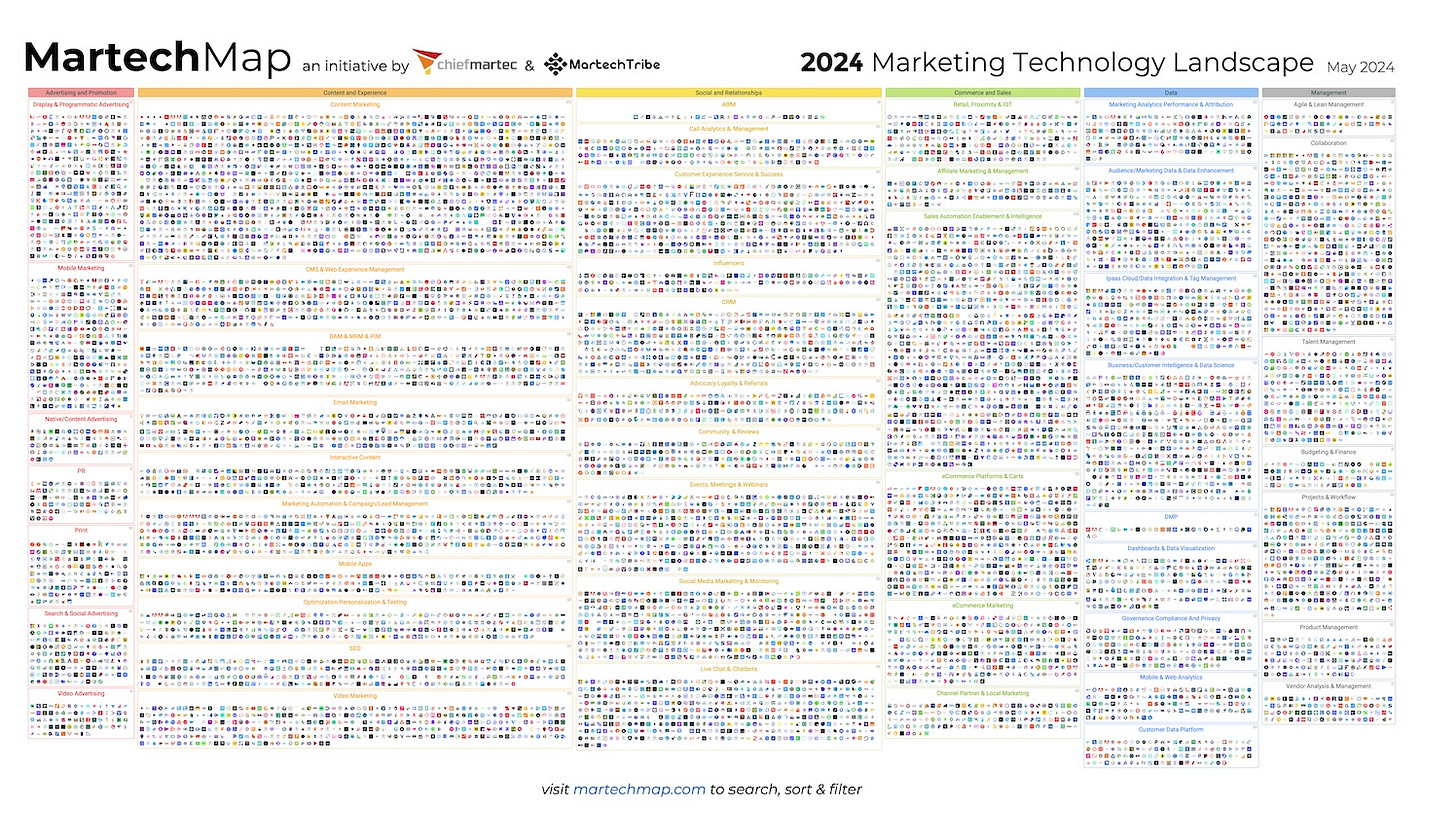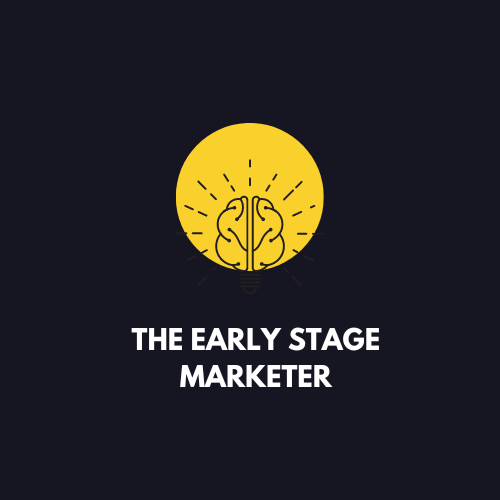A Special Issue: Break the Loop
Why Marketers Should Build AI Agents (and How to Start)
Hello Marketer,
How have you been? I know this breaks our usual loop, but I couldn’t resist sharing something exciting with you. We’re closing in on our 10th edition (Issue X!) of Engineering for Marketers, and I’ve got special plans for that milestone. But before we get there, here’s a bonus issue I think you’ll really enjoy.
For this one, I invited a special guest, Onyinye, an experienced Product Marketing Manager who’s helped B2B and B2C startups uncover customer value and turn it into strategy across content, community, events, and product launches. She also writes The Early-Stage Marketer newsletter and is building a community for early-career marketers in startups.
This is a treat, and I’m glad to share it with you. The next words are hers.
Why Marketers Should Build AI Agents (and How to Start)
Marketers are no strangers to new tools. Every few years, there’s a wave of technology that promises to change how we work.
For instance, there are over 14,000 Martech tools with 27.8% growth YOY. So I understand that feeling of overwhelm and wanting to hide beneath a rock to escape this deluge of new tools. But AI agents are different.
Source: Chiefmartec
They’re not just another hype that you should have ROMO - relief of missing out. Aside from the fact that AI is now a skillset required to succeed at work, AI agents are tools that can change how you work.
They are digital co-workers that take on repeatable tasks, freeing you to focus on strategy, creativity, and more.
For marketers, especially those in small teams who often juggle too many responsibilities with limited time, AI agents are helpful. They help you scale yourself.
But here’s the catch: agents are only as effective as the process you design for them.
For example, if you ask Claude to write an article on building a marketing portfolio, you’ll get something generic.
Prompt:
Write a 1,000-word article on how to build a marketing portfolio
Now compare that to giving real context. Say you’re hiring for a junior social media marketer role and you’ve noticed recurring issues in the portfolios you reviewed.
Prompt:
I’m hiring for a junior social media marketer role. In the portfolios I’ve reviewed, I noticed [list common issues]. Explain why these issues hold candidates back. Then write an article for entry-level marketers on how to create a stronger portfolio, with practical examples.The difference is huge. The second prompt produces something far more tailored and valuable than the first. I wrote a bit about this here, where I shared how I used AI to plan an in-person event for marketers. As I mentioned earlier, AI agents are intelligent, but they won’t magically “figure things out.”
If your process is vague, the output will be vague.
If your steps are broken, they’ll replicate that. This means your job as a marketer experimenting with agents is not just about writing good prompts. It’s about designing processes they can reliably execute.
Why Marketers Should Build AI Agents
Think about your job right now. It’s full of repeatable tasks like pulling research, drafting copy, repurposing content, tracking campaign insights, and preparing reports.
Every one of these can be broken down into smaller steps that an agent can execute. Remember, they are skilled teammates who take care of the legwork so you can focus on higher-value work.
For example:
An agent can prep competitor insights before your weekly strategy call.
Another can clean up and structure customer feedback for product teams.
Or one can draft a first-pass outline for your next blog post.
The marketers who start building agents now will not just save time. They’ll sharpen an entirely new skill: process design.
How to Approach Building Agents
When I first started experimenting with agents, it wasn’t out of curiosity. I had a real problem: a content upgrade project that needed a lot of manual effort. I thought, “What if I could build an agent to take on most of this?”
The first step was breaking the task down. I mapped it into four stages: research → outline → draft → edit. Since agents mirror your process, I set up one for each step.
Here’s what that looked like in practice:
Define the process clearly. I mapped out the workflow:
Research → Outline → Draft → Edit.Test different setups. Initially, I tried using a single agent to handle everything. But Thanks to my Pal Claude, I realised that if one agent handles all these, there’s a risk of this breaking. So I split it into four specialised agents, one for each step.
Troubleshoot and refine. Sometimes everything works on the first try (especially if you get my AI agent library, which I’ll share at the upcoming workshop). Other times, you hit snags. For example, one agent needed a Google Doc from the previous step but couldn’t access it. After a lot of trial and error, I found a simple workaround: adding a column in my spreadsheet where each agent stored its output and updated its status, which then triggered the next one.
Think critically about AI feedback. Tools like ChatGPT and Claude helped me troubleshoot, but they were not always right. I had to question suggestions, catch contradictions, and adjust.
Refine. At the start of this article, I said AI agents are your digital co-workers. I was trying to be nice. I actually refer to them as my army of employees. This means I have to review their performance to spot areas of improvement constantly. In my case, I realised I didn’t need four agents draining credits. I simplified it into one agent, but still kept the spreadsheet as the hub/trigger.
This is process design in action. The agent’s effectiveness came down to how well I defined roles, structured handoffs, and adjusted the flow.
Examples from My Own Work
1. Content repurposing
The content upgrade project I mentioned was my first experiment. I built an agent flow where research rolled into an outline, then a draft, then an edit. After several iterations, I found a reliable way to offload most of the grunt work while still keeping quality control on my end.
2. Extracting insights from demo calls
Later, I built another agent to help me with demo call recordings. Instead of listening back to every call manually, the agent extracted key insights: objections raised, feature requests, and recurring themes. That allowed me to spend less time digging for patterns and more time shaping messaging and strategy.
In both cases, the agent wasn’t replacing me. It was amplifying me, giving me more leverage by handling the repetitive yet essential parts of the process.
The Takeaway
The biggest lesson? Treat your agents like employees.
Give them clear instructions.
Review their performance.
Improve them continuously.
Building AI agents isn’t about replacing yourself. It’s about designing your processes, then training your “digital co-workers” to replicate them.
And for marketers, that’s where the real opportunity lies. The ones who learn how to do this now will be the ones ahead of the curve tomorrow.
On Friday, Sept.26th, I’ll host a workshop on how to build an AI agent for marketing tasks. If you want to experiment with AI agents, this is the perfect opportunity. At the end of the class, I’ll share my AI Agent library, which contains templates of Agents I’ve built so far, including for personal stuff.
Please register and invite a friend.
I’m glad I could share this as part of Engineering for Marketers. I’ll pass it back to Amos to wrap things up
Editor’s Note
I hope you enjoyed this special issue from Onyinye as much as I did. What excites me about sharing her perspective is that Engineering for Marketers isn’t just about breaking down the technical side of marketing; it’s also about exploring new possibilities and where the future might take us. That’s a little hint at what’s coming in Issue X.
In the meantime, don’t miss the upcoming AI Agent workshop. I’ll be there myself, and I think you’ll get a lot of practical value from it too.
I’m always open to questions, feedback, or ideas for what you’d like me to cover next. Just hit reply or reach out directly: amos.feranmi@gmail.com.
Made with curiosity (and probably too much caffeine),
Amos Feranmi







